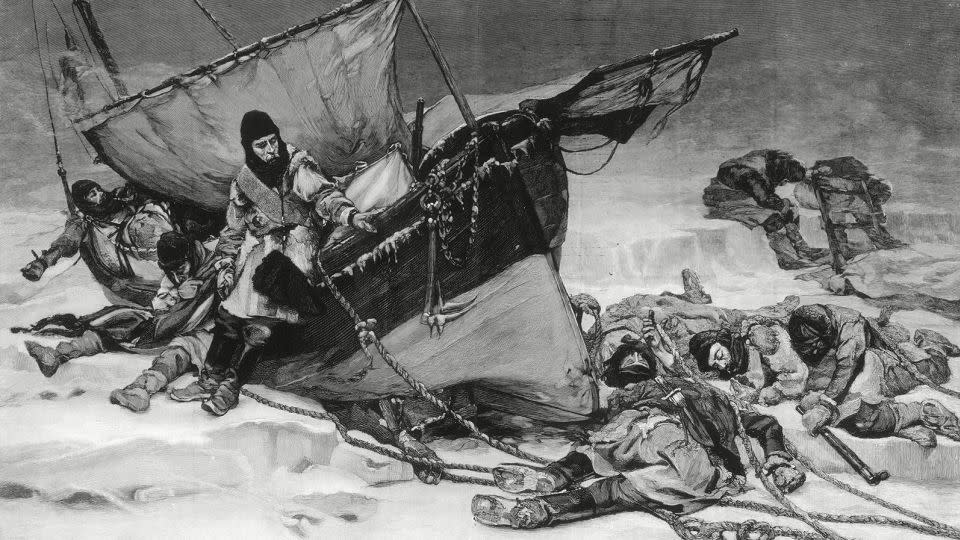The last photos of John Franklin’s doomed polar expedition party sell for over $545,000
- Oops!Something went wrong.Please try again later.
- Oops!Something went wrong.Please try again later.
Editor’s Note: This article was updated with the final sale price and other details following the auction’s conclusion.
Sir John Franklin’s doomed expedition to the Arctic captivated the Victorian public with its mysterious disappearance, fruitless rescue missions and gory tales of cannibalism.
On Thursday, a set of photographs depicting Franklin and his fellow senior officers taken in May 1845, just three days before they set sail, sold at a Sotheby’s auction in London for £444,500 ($545,700).
“It doesn’t happen that often when we get something of this historic importance that has been in private hands, a family of Sir John Franklin by direct descent… and then you have the opportunity to present something like this to the public,” Emily Bierman, global head of Sotheby’s photographs department, told CNN prior to the auction.
Commissioned by Franklin’s wife, Jane, this set of daguerreotypes — the first successful form of photography — represents the last ever photographs taken of the 14 men and was assumed to be lost until now.

“Lady Franklin having the foresight to memorialize this really important and historic moment of this expedition about to begin, it is very poignant in retrospect, of course, because then they disappear,” Bierman said.
“And the history that happens over the next 170-plus years of what exactly happened to Franklin, what happened to his men, where did the ships go, you can really tie it to these photographs.”
On May 19, 1845, Franklin set out with two ships and a crew of 134 men with the intention of exploring 500 kilometers (311 miles) of Arctic coastline to complete the charting of the Northwest Passage. They were equipped with three years’ worth of preserved food supplies.
But after two years without contact from the expedition, Lady Franklin pushed the Admiralty in London to send a search party. They waited another year, given the expedition’s amount of supplies, before launching a search effort and offering the equivalent of £2 million ($2.5 million) in today’s money as a reward.
“These are the daguerreotypes from which the engravings that were shown in the Illustrated London News in 1851 were made from,” Bierman said. “It is these portraits that most people, when you think about knowing what Franklin and the officers looked like … these daguerreotypes that most people draw their reference from.”
Such a large reward prompted many searches, with more men and ships lost looking for Franklin and his men than in the original expedition itself. The photographs, Bierman said, acted “almost like a rallying call, because when you can assign an image to a story, it is so much more humanizing.”
Years later, in 1854, Scottish explorer John Rae was told by Inuit hunters that the ships had become icebound and the men had died from cold, and even resorted to cannibalism.
But still, the eventual fates of the crew remained shrouded in mystery, and it was not until the 21st century that the ships were eventually discovered by Canada’s national parks service and the Inuit communities — HMS Erebus was found in 2014 and HMS Terror in 2016.
The expedition’s tragic, but still largely unknown, demise has continued to fascinate the public, providing the inspiration for fictional works including the 2018 AMC TV show “The Terror,” starring Jared Harris, Tobias Menzies and Ciarán Hinds.
For more CNN news and newsletters create an account at CNN.com

